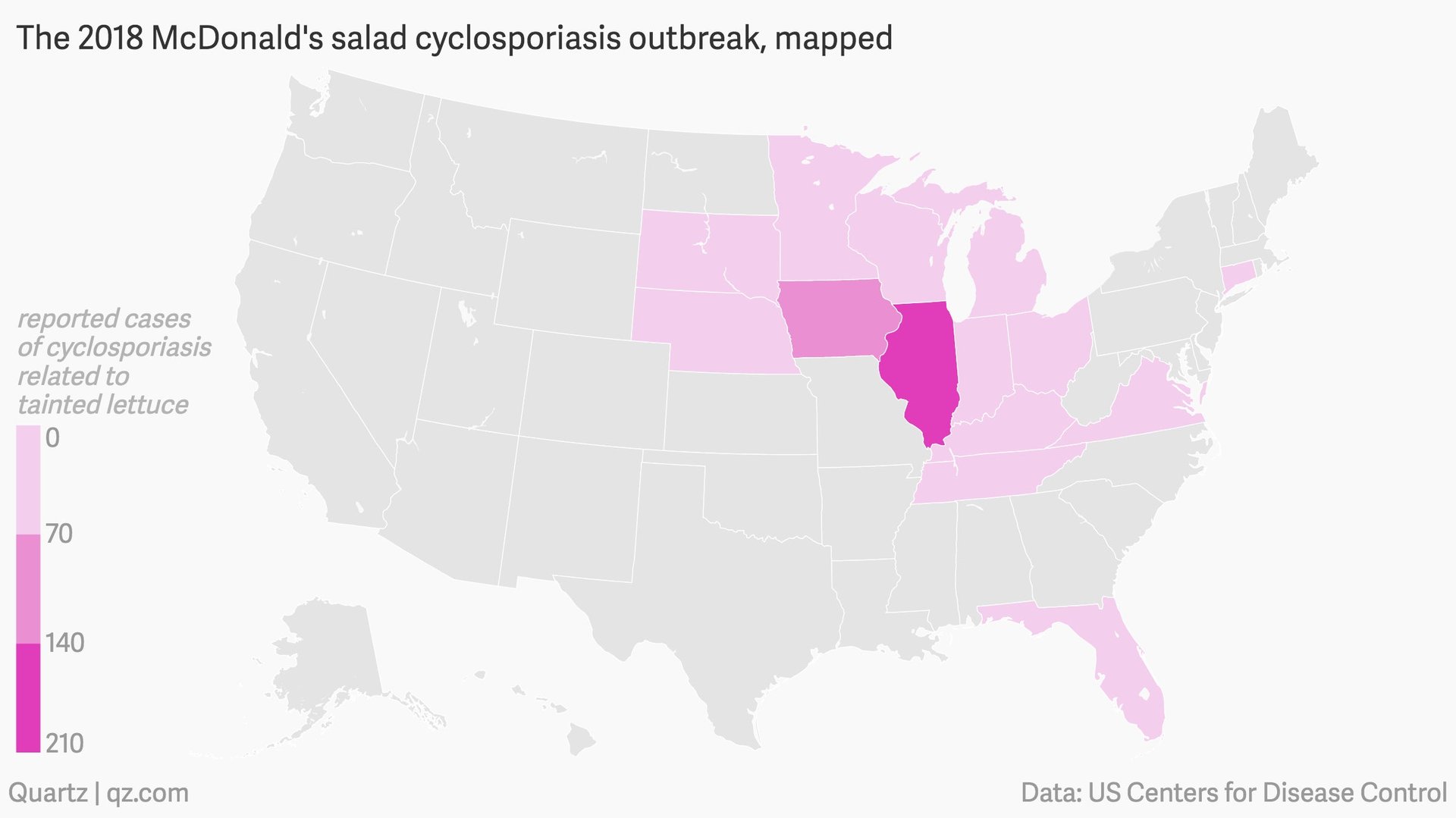Contaminated McDonald’s lettuce causes 400 cases of intestinal parasite infection
It’s probably a good thing McDonald’s isn’t known for its salads.


It’s probably a good thing McDonald’s isn’t known for its salads.
As of Friday, Aug. 2, some 395 people across 15 states have gotten sick with Cyclospora cayetanensis, a parasite contaminating salads sold at McDonald’s locations, according to the US Centers for Disease Control. C. cayetanensis causes an infection called cyclosporiasis; it’s a less common form of food poisoning that causes similar symptoms such as diarrhea and nausea. In most cases, the body rids itself of cyclosporiasis within a few days of exposure to the parasite, but sometimes symptoms can persist for a month, coming in waves. There are also antibiotics that can successfully cure the infection. In this particular outbreak, first spotted in July, there have been no deaths, but 16 people have been hospitalized.
According to an investigation by the US Food and Drug Administration, McDonald’s restaurants in the midwest had received shipments of a tainted lettuce-and-carrot mix from California-based supplier Fresh Express.
McDonald’s has since stopped selling lettuce that came from Fresh Express at some 3,000 locations in the affected area. The US Department of Agriculture has issued a warning about other products containing potentially tainted lettuce from Fresh Express, distributed by Indianapolis-based Caito Foods that may have been sold at grocery stores including Trader Joe’s and Kroger’s. These products have expiration dates in July, so no one should be eating them anyway, but it’d be wise to check for them from in your refrigerator anyways, and throw out any you find.
Although this outbreak seems to be largely under control, it adds to a disturbing food-contamination trend in the US. In spring of this year, another outbreak tied to romaine lettuce, in that case due to contamination from the bacterium E. Coli, sickened hundreds of people across some 29 states. And just before that, another batch of contaminated lettuce reached 13 states, killing at least one consumer. Also this year, disease-causing pathogens have made their ways into eggs, and even dry, processed foods like cereal.
It is notoriously difficult to find the source of food-poisoning outbreaks, and the more people across the country travel, the more likely these contaminations are to cross state borders. In the case of the current cyclosporiasis outbreak, cases in states far from the midwest—like Florida and Connecticut—were likely the result of consumers who purchased food while on the road. Although there is a comprehensive legal system in the US to incentivize restaurants to minimize these outbreaks, it hasn’t yet been able to stop them altogether.
Correction (Aug. 9): A previous version of this article incorrectly stated that the contaminated lettuce sold at McDonald’s came from Caito Foods. In fact, the source of that produce was Fresh Express. Concurrently, the USDA issued a warning that certain Caito Foods products, which also used produce sourced from Fresh Express, could also be contaminated